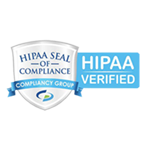Saliva Liquid Biopsy
Clinical Laboratory Medicine Innovation
Stabilize, Preserve, & Amplify DNA Signal at the Point of Collection for Noninvasive Genomic, Epigenomic, & Proteomic Testing
Saliva Liquid Biopsy
Clinical Laboratory Medicine Innovation
Stabilize, Preserve, & Amplify DNA at the Point of Collection for Noninvasive Genomic, Epigenomic, & Proteomic Testing
Spectrum’s Non-invasive & Multimodal
Saliva Diagnostic Advantage
Several cancer-derived components that circulate in our body fluids, such as circulating tumor cells, circulating cell-free nucleic acids (RNA and DNA), extracellular vesicles/exosomes, and proteins, have been extensively investigated for cancer research. Isolation and molecular analysis of these tumor-derived components, including genomic, epigenomic, and proteomic assessments from liquid biopsy samples, represent a new multimodal diagnostic tool. Recent biomedical innovations supporting the increasing knowledge of the pathways causing cancer have begun to attract interest in implementing the use of liquid biopsy for clinical practice and routine molecular diagnostics.
Cancer is a highly individualized disease. Successful cancer treatments depend on better, personalized therapies. Better therapies need easier access to real-time changes in genetic disease data. Liquid biopsy delivers this ongoing data opportunity. Liquid biopsies offer holistic insights into the whole tumor landscape. The sensitivity of liquid biopsy technologies for detecting circulating tumor DNA (ctDNA) genomic alternations is limited by low concentration levels as well as by the molecule size. In saliva, the ctDNA is also almost exclusively ultrashort (usctDNA).
ctDNA fragments present a short half-life and achieving detectable concentrations of ctDNA in body fluids is not an easy task. Furthermore, standard DNA preservation and extraction methods offer inadequate amounts of these tiny usctDNA fragments. It’s easy to understand why detection with consistent accuracy has been extremely difficult using current liquid biopsy approaches. Understanding the detailed biological properties of ctDNA is essential to developing detection innovation that improves the performance of liquid biopsy platforms.
A recent UCLA saliva liquid biopsy study revealed the detection solution inside the superior innovation of Spectrum’s saliva collection system for genomic preservation, stabilization, and DNA amplifying magnifications of testing sensitivity.
Spectrum’s Non-invasive Multimodal Saliva Diagnostic Advantage
Several cancer-derived components that circulate in our body fluids, such as circulating tumor cells, circulating cell-free nucleic acids (RNA and DNA), extracellular vesicles/exosomes, and proteins, have been extensively investigated for cancer research. Isolation and molecular analysis of these tumor-derived components, including genomic, epigenomic, and proteomic assessments from liquid biopsy samples, represent a new multimodal diagnostic tool. Recent biomedical innovations supporting the increasing knowledge of the pathways causing cancer have begun to attract interest in implementing the use of liquid biopsy for clinical practice and routine molecular diagnostics.
Cancer is a highly individualized disease. Successful cancer treatments depend on better, personalized therapies. Better therapies need easier access to real-time changes in genetic disease data. Liquid biopsy delivers this ongoing data opportunity. Liquid biopsies offer holistic insights into the whole tumor landscape. The sensitivity of liquid biopsy technologies for detecting circulating tumor DNA (ctDNA) genomic alternations is limited by low concentration levels as well as by the molecule size. In saliva, the ctDNA is also almost exclusively ultrashort (usctDNA).
ctDNA fragments present a short half-life and achieving detectable concentrations of ctDNA in body fluids is not an easy task. Furthermore, standard DNA preservation and extraction methods offer inadequate amounts of these tiny usctDNA fragments. It’s easy to understand why detection with consistent accuracy has been extremely difficult using current liquid biopsy approaches. Understanding the detailed biological properties of ctDNA is essential to developing detection innovation that improves the performance of liquid biopsy platforms.
A recent UCLA saliva liquid biopsy study revealed the detection solution inside the superior innovation of Spectrum’s saliva collection system for genomic preservation, stabilization, and DNA amplifying magnifications of testing sensitivity.
Crucial, Real-Time
Disease Data for
Vital Early Indicators
Screen, Diagnose, &
Monitor with Noninvasive
Liquid Biopsy
Amplify Signal,
Boost Sensitivity & Detection
at Point-of-Collection

UCLA Confirms Existence
of ctDNA in Saliva
74% of DNA in Saliva Comes
From White Blood Cells
Saliva is an excellent source of high-quality genomic DNA (gDNA). Using plasma and saliva from NSCLC patients, the two front-line actionable EGFR mutations (L858R and Exon 19del) were detected in the saliva of NSCLC patients with 96% & 100% sensitivity & concordance compared with biopsy-based genotyping using Spectrum’s saliva collection device.
A Better
Diagnostic Tool
Early & Pain-Free
Saliva Diagnostics
Successful cancer treatments depend on better, personalized therapies. Better therapies need easier access to real-time changes in genetic disease data. A University of California San Diego School of Medicine study examined thousands of cancer patients using a precision medicine therapeutic approach and witnessed an improved treatment response and longer periods of disease remission.
With an understanding of just how crucial genetic disease data is to successful patient outcomes or the probability of cancer mutations changing a patient’s disease data over time–only then do we realize a biopsy is not a once-and-done act. Difficulties with solid tissue biopsies can often create clinical obstacles in detecting ongoing mutation analysis or drug resistance, as well as the ability to identify new personalized treatment options or treatment sensitivities.
Saliva liquid biopsies empower patients and providers with non-invasive sample collection and early detection of the real-time tumor data needed to quickly impact and change outcomes.
Screening, Detection,
and Monitoring
For over 150 years, proteins have provided vital early indicators of disease. Recent research has identified and cataloged 2290 proteins in whole saliva so far (plasma holds 2698 proteins).
Out of all known proteins, 1058 proteins have been identified as cancer biomarkers, and 34% have already been found in saliva.
To date, 40% of proteins found have been identified as biomarkers for diseases including cancer, cardiovascular disease, and stroke.
Screening, Detection, and Monitoring
For over 150 years, proteins have provided vital early indicators of disease. Recent research has identified and cataloged 2290 proteins in whole saliva so far (plasma holds 2698 proteins).
Out of all known proteins, 1058 proteins have been identified as cancer biomarkers, and 34% have already been found in saliva.
To date, 40% of proteins found have been identified as biomarkers for diseases including cancer, cardiovascular disease, and stroke.
Saliva Collection Device
Delivers Increased
Detection & Precision
In addition to reducing the effects of saliva matrix on hybridization reactions, the UCLA study demonstrated a significant increase in precision detection with a decrease in the intra-assay coefficient of variance (COV) to an impressive 5% when collecting, preserving, and stabilizing saliva samples using the Spectrum SDNA saliva collection device compared to 26.8% using raw or neat saliva.
Likewise, this significant decrease in COV was repeated and observed in diluted samples. Samples containing the Spectrum chemistry registered at a low 7.5%, and those diluted samples using raw or neat saliva registered at a high of 35.5% COV. Experts state overall COV should be less than or equal to 20%. The higher the percentage, the greater inconsistency (any value greater than 30 is considered unacceptable).
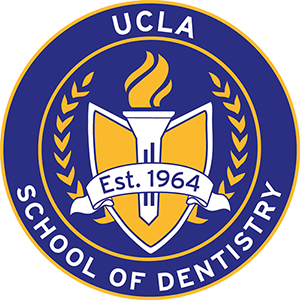 Saliva Liquid Biopsy Study:
Saliva Liquid Biopsy Study:
What did we learn?
Groundbreaking UCLA Lung Cancer Detection Discovery
More successful patient outcomes result from the combination of early detection and a personalized treatment strategy using cancer-specific genetic disease data. According to a World Health Organization (WHO) February 2022 publication, cancer is the leading cause of death worldwide (1 in 6). In addition, the numbers show lung cancer accounts for 1.8 million deaths and is reported to be the most common cause of cancer death. Approximately 230,000 U.S. citizens a year will receive a lung cancer diagnosis, with an estimated 135,000 deaths. Lung cancer deaths have become more numerous than the deaths from prostate, breast, brain, and colorectal cancer combined. It has now become the most common cause of cancer deaths in men and the second most common in women.
Most lung cancers (85%) fall into the category called non-small cell lung cancer (NSCLC). Though this form of lung cancer progresses more slowly than small cell lung cancer (SCLC), 40% of those living with NSCLC will have it spread beyond the lungs by the time it has been diagnosed. Doctors classify lung cancer types according to the size and shape of the cancer cells seen under a microscope. Around 13% of lung cancers are small-cell lung cancers (SCLC), and 84% are NSCLC. NSCLC is an umbrella term that includes several subsets, like adenocarcinoma, squamous cell, and large cell carcinoma. Many people receive a diagnosis of NSCLC after it has spread to other parts of their body. Changes in the DNA of the tumor cells can make cancer spread faster.
A tissue biopsy is currently considered the gold standard in a cancer diagnosis. This type of traditional solid tumor biopsy has several drawbacks both for the patient and the provider trying to identify the most successful treatment strategy. Some tumors are not easily accessible. Tumor biopsies can pose additional risks to the patient from the invasive nature as well as based on where the tumor is located. In addition, studies have shown that biopsies are not always representative of the entire tumor. Because many tumors are heterogeneous, different sites within the tumor can have different levels of gene expression and metastatic potential, and a tissue biopsy may not be indicative of all tumor phenotypes. During the course of a disease, cancers generally become more heterogeneous and divergent. As a result, the bulk of the tumor can harbor a diverse collection of cells with distinct and differing molecular signatures and different levels of sensitivity to treatment.
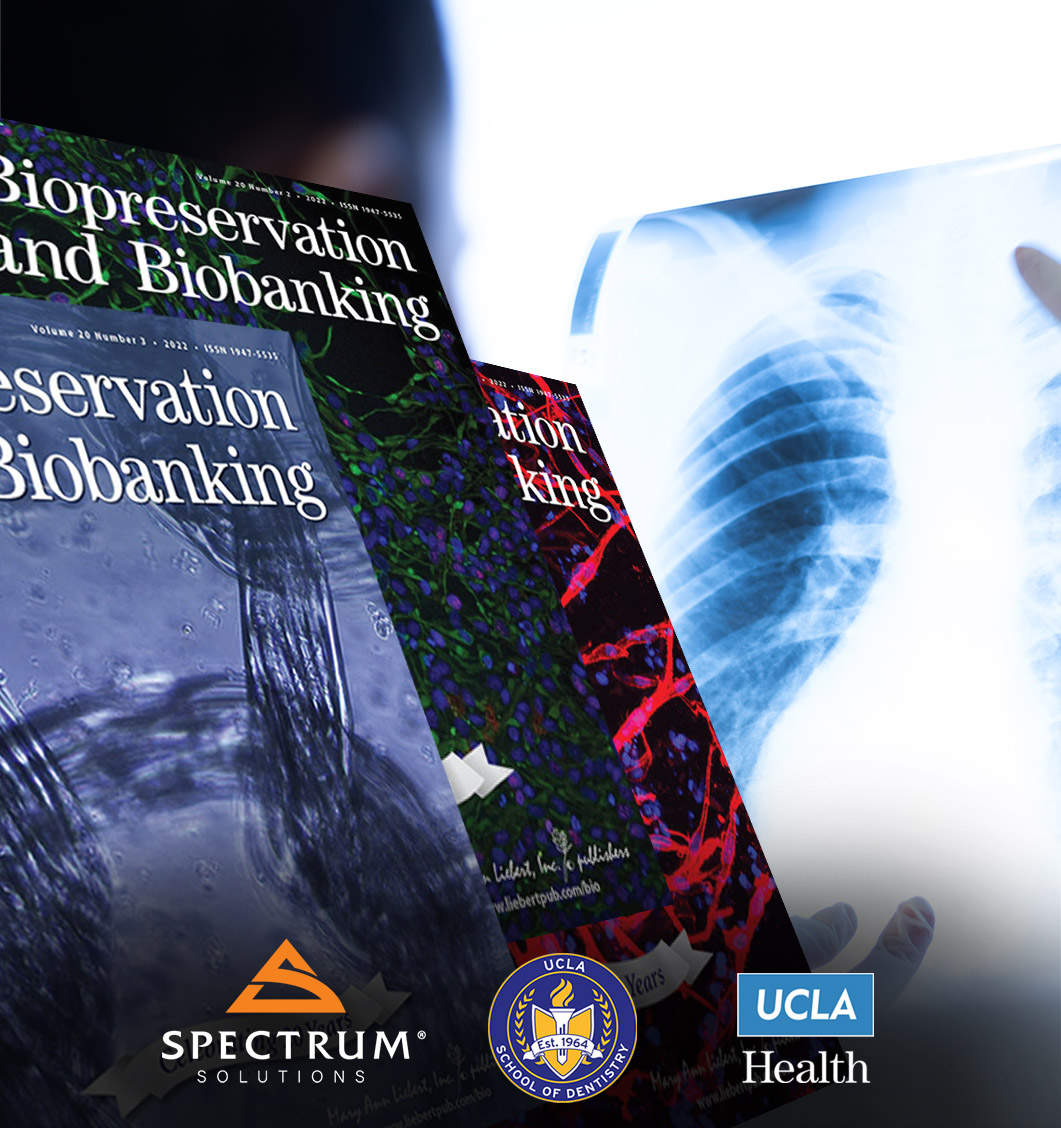 Liquid biopsy that delivers detection sensitivity closest to tissue biopsy-based genotyping of tumor-specific ctDNA has remained a challenge and an unmet clinical need. Although liquid biopsy and ctDNA analysis have quickly become a valuable, even lifesaving, and favored approach. The noninvasive use of saliva over blood still faces a big challenge. The sensitivity of liquid biopsy technologies for detecting ctDNA genomic alternations is limited by low concentration levels as well as by the molecule size and exposes the critical need for superior innovation capable of helping magnify detection sensitivity and increasing test reproducibility. In saliva, the EGFR ctDNA is almost exclusively ultrashort (usctDNA). Standard DNA preservation and extraction methods offer inadequate amounts of these tiny usctDNA fragments.
Liquid biopsy that delivers detection sensitivity closest to tissue biopsy-based genotyping of tumor-specific ctDNA has remained a challenge and an unmet clinical need. Although liquid biopsy and ctDNA analysis have quickly become a valuable, even lifesaving, and favored approach. The noninvasive use of saliva over blood still faces a big challenge. The sensitivity of liquid biopsy technologies for detecting ctDNA genomic alternations is limited by low concentration levels as well as by the molecule size and exposes the critical need for superior innovation capable of helping magnify detection sensitivity and increasing test reproducibility. In saliva, the EGFR ctDNA is almost exclusively ultrashort (usctDNA). Standard DNA preservation and extraction methods offer inadequate amounts of these tiny usctDNA fragments.
The published UCLA and Spectrum Solutions research collaboration focused on a new, sensitive, and non-invasive saliva-based liquid biopsy approach and has confirmed the existence as well as the ability to detect usctDNA in Saliva. After integrating the Spectrum Solutions SDNA-1000 saliva collection device with patented stabilizing and preservation chemistry, the research team at UCLA revealed the device-specific, sample prep point-of-collection advantages, including the ability to identify low ctDNA content with a high background of cfDNA noise, a 14-fold boost in sensitivity, and more to successfully demonstrate the proof of concept and feasibility of saliva for the non-invasive detection of cancer. [Read More…]

 Saliva Liquid Biopsy Study:
Saliva Liquid Biopsy Study:
What did we learn?
Groundbreaking UCLA Lung Cancer Detection Discovery
More successful patient outcomes result from the combination of early detection and a personalized treatment strategy using cancer-specific genetic disease data. According to a World Health Organization (WHO) February 2022 publication, cancer is the leading cause of death worldwide (1 in 6). In addition, the numbers show lung cancer accounts for 1.8 million deaths and is reported to be the most common cause of cancer death. Approximately 230,000 U.S. citizens a year will receive a lung cancer diagnosis, with an estimated 135,000 deaths. Lung cancer deaths have become more numerous than the deaths from prostate, breast, brain, and colorectal cancer combined. It has now become the most common cause of cancer deaths in men and the second most common in women.
Most lung cancers (85%) fall into the category called non-small cell lung cancer (NSCLC). Though this form of lung cancer progresses more slowly than small cell lung cancer (SCLC), 40% of those living with NSCLC will have it spread beyond the lungs by the time it has been diagnosed. Doctors classify lung cancer types according to the size and shape of the cancer cells seen under a microscope. Around 13% of lung cancers are small-cell lung cancers (SCLC), and 84% are NSCLC. NSCLC is an umbrella term that includes several subsets, like adenocarcinoma, squamous cell, and large cell carcinoma. Many people receive a diagnosis of NSCLC after it has spread to other parts of their body. Changes in the DNA of the tumor cells can make cancer spread faster.
A tissue biopsy is currently considered the gold standard in a cancer diagnosis. This type of traditional solid tumor biopsy has several drawbacks both for the patient and the provider trying to identify the most successful treatment strategy. Some tumors are not easily accessible. Tumor biopsies can pose additional risks to the patient from the invasive nature as well as based on where the tumor is located. In addition, studies have shown that biopsies are not always representative of the entire tumor. Because many tumors are heterogeneous, different sites within the tumor can have different levels of gene expression and metastatic potential, and a tissue biopsy may not be indicative of all tumor phenotypes. During the course of a disease, cancers generally become more heterogeneous and divergent. As a result, the bulk of the tumor can harbor a diverse collection of cells with distinct and differing molecular signatures and different levels of sensitivity to treatment.
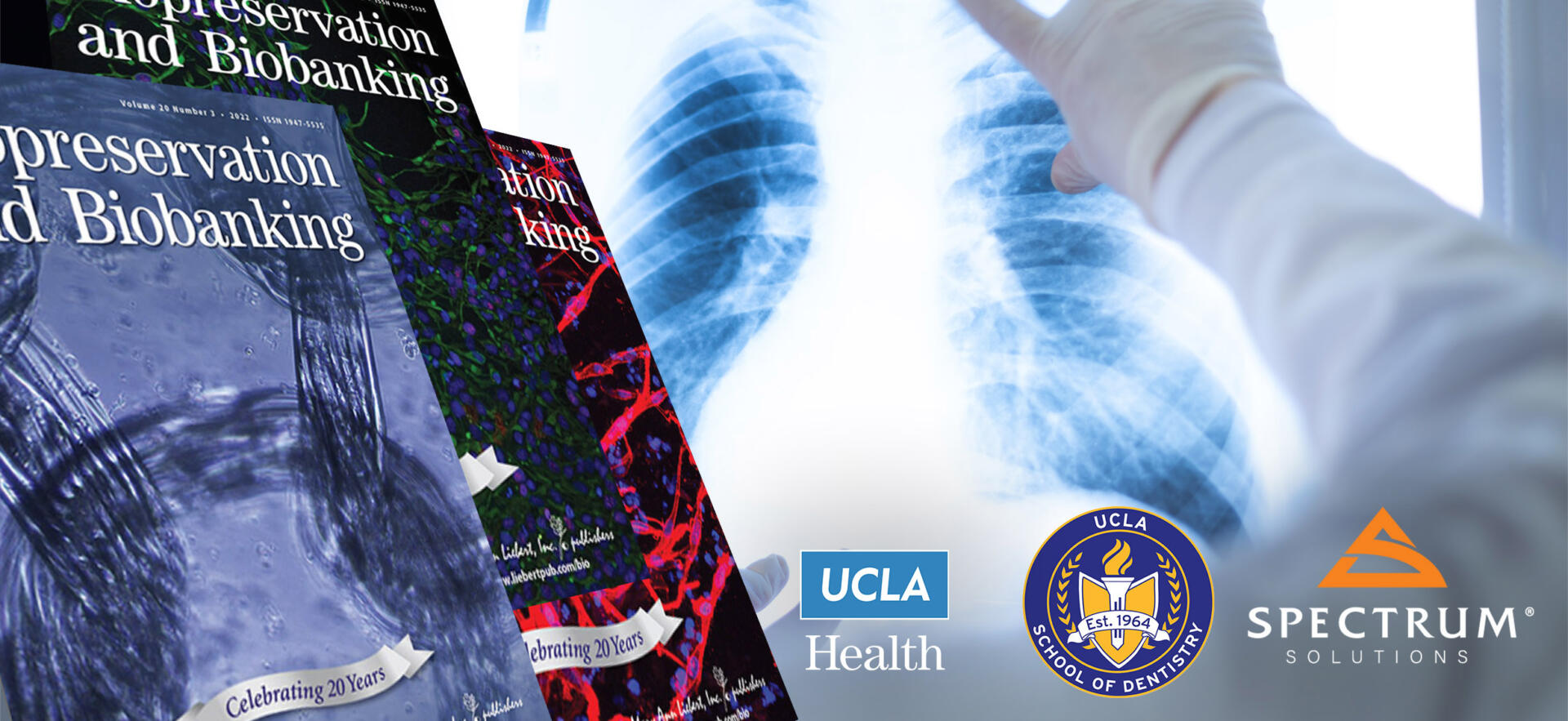
Liquid biopsy that delivers detection sensitivity closest to tissue biopsy-based genotyping of tumor-specific ctDNA has remained a challenge and an unmet clinical need. Although liquid biopsy and ctDNA analysis have quickly become a valuable, even lifesaving, and favored approach. The noninvasive use of saliva over blood still faces a big challenge. The sensitivity of liquid biopsy technologies for detecting ctDNA genomic alternations is limited by low concentration levels as well as by the molecule size and exposes the critical need for superior innovation capable of helping magnify detection sensitivity and increasing test reproducibility. In saliva, the EGFR ctDNA is almost exclusively ultrashort (usctDNA). Standard DNA preservation and extraction methods offer inadequate amounts of these tiny usctDNA fragments.
The published UCLA and Spectrum Solutions research collaboration collaboration focused on a new, sensitive, and non-invasive saliva-based liquid biopsy approach and has confirmed the existence as well as the ability to detect usctDNA in Saliva. After integrating the Spectrum Solutions SDNA-1000 saliva collection device with patented stabilizing and preservation chemistry, the research team at UCLA revealed the device-specific, sample prep point-of-collection advantages, including the ability to identify low ctDNA content with a high background of cfDNA noise, a 14-fold boost in sensitivity, and more to successfully demonstrate the proof of concept and feasibility of saliva for the non-invasive detection of cancer. [Read More…]

Associations, Memberships
& Credentials
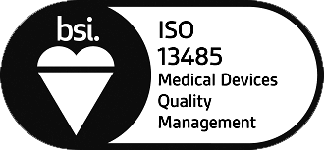
Associations, Memberships
& Credentials















